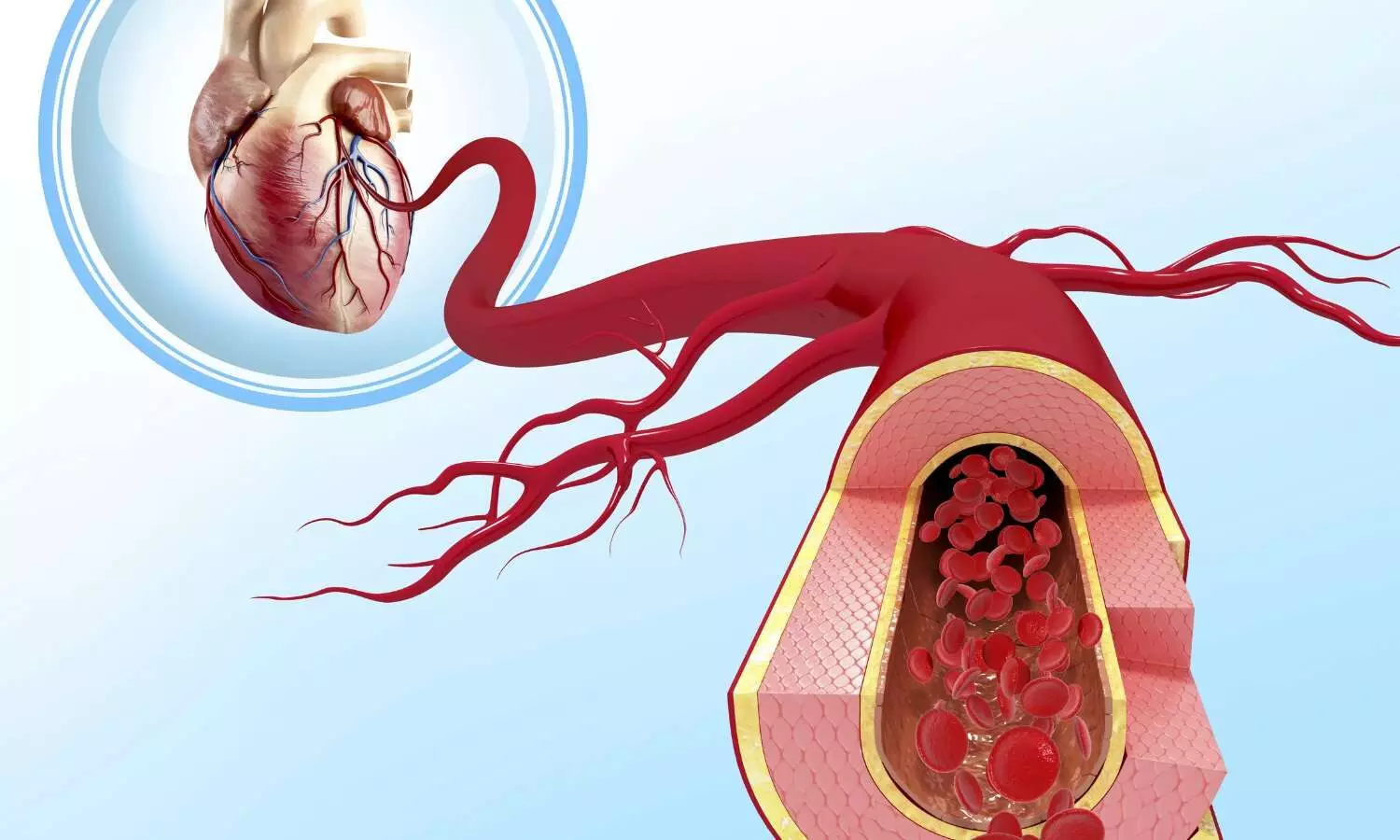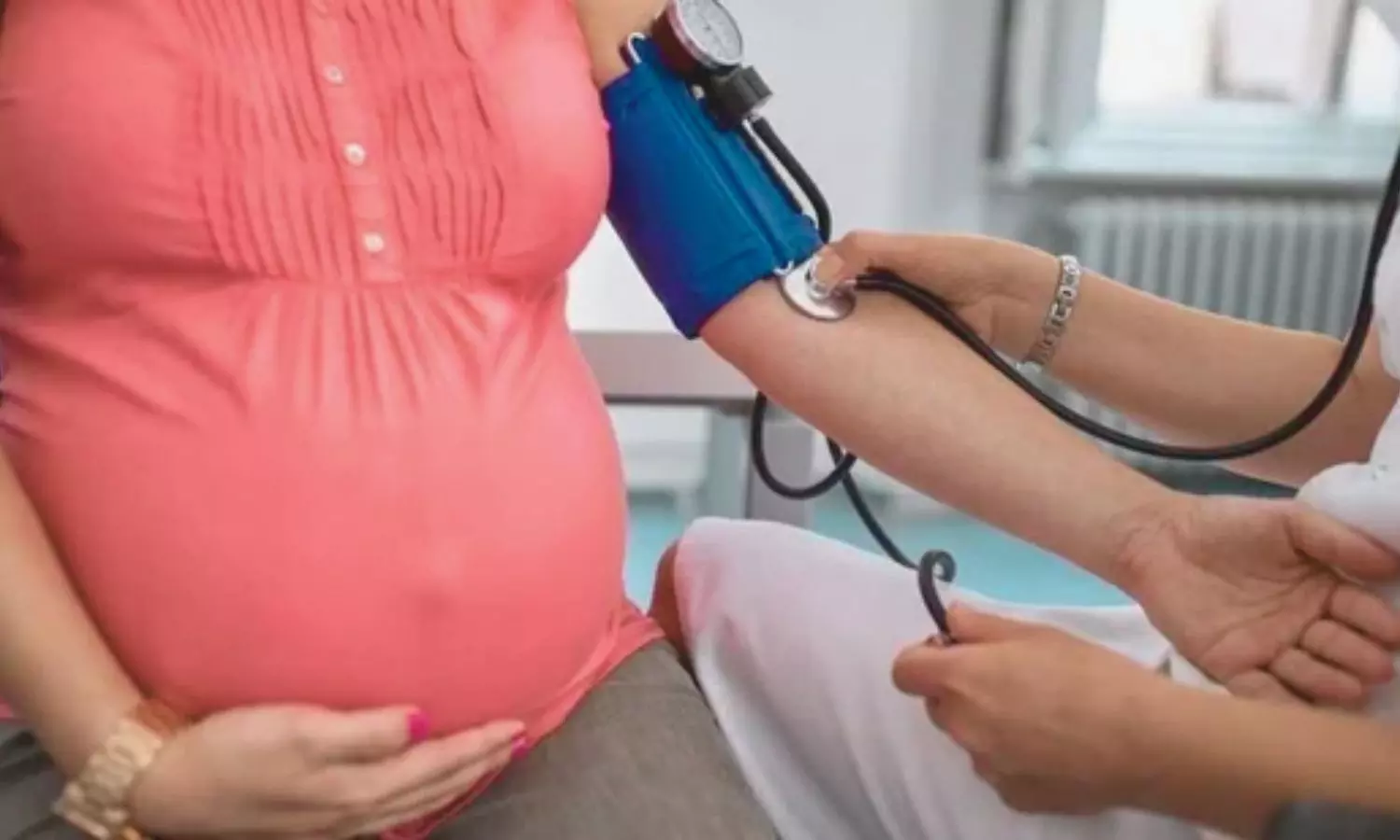Blood on demand: New freezing method slashes thaw time for emergency blood transfusions
Powered by WPeMatico
Powered by WPeMatico
Powered by WPeMatico
Powered by WPeMatico
Powered by WPeMatico
Powered by WPeMatico
Powered by WPeMatico

Madrid: Routine coronary computed tomography (CCT)-based follow-up after percutaneous coronary intervention (PCI) of the left main coronary artery did not reduce death, myocardial infarction (MI), unstable angina or stent thrombosis compared with symptom-based follow-up, according to late-breaking research presented in a Hot Line session today at ESC Congress 2025
The left main coronary artery supplies a large proportion of the heart muscle and significant left main coronary artery disease is associated with high morbidity and mortality. The introduction of coronary stents along with the improvements in technology and pharmacological management has increased the use of PCI in these high-risk patients with similar results achieved compared with coronary artery bypass grafting.
“Detrimental complications, such as stent restenosis, and recurrent ischaemic events can occur after left main PCI; however, the optimal surveillance strategy remains a subject of debate,” explained trial presenter, Doctor Ovidio De Filippo from Hospital Citta Della Salute e della Scienza di Torino, Turin, Italy.
“In recent years, CCT has emerged as a valuable tool for diagnosis and monitoring, providing accuracy comparable to invasive angiography, while minimising procedural risks and reducing healthcare costs. We conducted the first randomised trial to evaluate the potential benefit of routine CCT-based follow-up at 6 months compared with standard symptom- and ischaemia-driven management in patients after PCI for left main disease.”
PULSE was an open-label, blinded-endpoint, investigator-initiated, randomised trial conducted at 15 sites in Europe and South America.
Participants were consecutive patients with critical stenosis undergoing PCI for left main coronary artery disease. Participants were randomised 1:1 to either a CCT-guided follow-up at 6 months (experimental arm) or standard symptom and ischaemia-driven management (control arm). Participants were followed for an additional 12 months (total follow-up 18 months).
In the CCT arm, if significant left main in-stent restenosis was detected, patients underwent invasive coronary angiography followed by target lesion revascularisation if in-stent restenosis was confirmed. If any significant stenosis was detected in a different site, management was conducted according to the current guidelines. In the standard-of-care arm, patients were managed per clinical guidelines and according to each centre’s standard practice. The primary endpoint was a composite of all-cause death, spontaneous MI, unstable angina or definite/probable stent thrombosis at 18 months.
A total of 606 patients were randomised who had a mean age of 69 years and 18% were female. CCT was performed in 89.8% of patients in the experimental arm at a median of 200 days.
A primary-endpoint event occurred in 11.9% of patients in the CCT arm and 12.5% of patients in the control arm at 18 months (hazard ratio [HR] 0.97; 95% confidence interval [CI] 0.76 to 1.23; p=0.80).
There was a reduced risk of spontaneous MI in the CCT arm vs. the control arm (0.9% vs. 4.9%; HR 0.26; 95% CI 0.07 to 0.91; p=0.004). An increase in imaging-triggered target-lesion revascularisation was observed in the CCT arm compared with the control arm (4.9% vs. 0.3%; HR 7.7; 95% CI 1.70 to 33.7; p=0.001); however, the incidence of clinically driven target-lesion revascularisation was similar between the arms (5.3% vs. 7.2%; HR 0.74; 95% CI 0.38 to 1.41; p=0.32).
Summing up the main findings, Principal Investigator, Professor Fabrizio D’Ascenzo, also from Hospital Citta Della Salute e della Scienza di Torino, said: “Systematic 6-month CCT-based follow-up did not result in a reduction in 18-month all-cause death, spontaneous MI, unstable angina and stent thrombosis. While universal CCT-based follow-up may not be useful, the marked reduction in spontaneous MI and identification of obstructive lesions requiring repeat PCI suggest this approach may be worth investigating further in selected patients with complex anatomies and over longer follow-up.”
Powered by WPeMatico

Pulsed field ablation did not have superior efficacy to radiofrequency ablation in patients with drug-resistant paroxysmal (intermittent) atrial fibrillation, according to results from a late-breaking trial presented in a Hot Line session today at ESC Congress 2025.
Atrial fibrillation (AF) is the most common sustained cardiac arrhythmia. Patients whose AF is not controlled by antiarrhythmic drugs may undergo catheter ablation to disrupt the abnormal electrical pathways that cause the arrhythmia.
Principal Investigator, Professor Pierre Jaïs from the IHU LIRYC (L’Institut de Rythmologie et Modélisation Cardiaque), Bordeaux, France, explained why the trial was carried out: “Pulmonary vein isolation using thermal radiofrequency-based ablation (RFA) is a widely accepted and established treatment for antiarrhythmic drug-resistant AF. However, pulmonary vein isolation has evolved with the introduction of pulsed field ablation (PFA), which is a faster, more straightforward nonthermal procedure that potentially offers more selective tissue targeting than thermal energy sources. Other trials have compared PFA with thermal energy sources with inconclusive results.2,3 We conducted the BEAT-PAROX-AF trial to directly compare PFA with advanced RFA in patients with antiarrhythmic drug-resistant symptomatic paroxysmal AF.”
BEAT-PAROX-AF was an open-label, randomised controlled superiority trial conducted at nine high-volume centres across France, Czechia, Germany, Austria and Belgium. Eligible patients were aged 18–80 years with symptomatic paroxysmal AF that was resistant to at least one antiarrhythmic drug, with a Class I or IIa indication for AF ablation according to ESC Guidelines and effective oral anticoagulation for >3 weeks prior to the planned procedure. Patients were randomised 1:1 to pulmonary vein isolation using either single-shot PFA or point-by-point RFA following the CLOSE protocol. The primary endpoint was the single-procedure success rate after 12 months, defined as the absence of ≥30-second atrial arrhythmia recurrence, cardioversion, Class I/III antiarrhythmic drug resumption after a 2-month blanking period or any repeat ablation. For follow-up, participants were instructed to perform weekly self-recorded single-lead ECGs and to capture recordings during symptomatic episodes using a mobile ECG system.
A total of 289 patients were analysed who had a mean age of 63.5 years and 42% were female. The mean duration of drug-resistant AF was 39 months.
The primary endpoint, single-procedure success at 12 months, was high and similar between the procedure types: 77.2% in the PFA group and 77.6% in the RFA group, with an adjusted difference of 0.9% (95% confidence interval [CI] –8.2 to 10.1; p=0.84).
The mean total procedure duration was significantly shorter for PFA (56 vs. 95 minutes), with an adjusted difference of −39 minutes (95% CI −44 to −34).
Overall, the safety profile was excellent in both groups. Procedure-related serious adverse events Including unplanned or prolonged hospitalisations occurred in 5 patients (3.4%) in the PFA group and 11 patients (7.6%) in the RFA group. Complications appeared more frequent with RFA. One transient ischaemic attack was observed with PFA, while two tamponade percutaneously drained and two cases of pulmonary vein stenosis >70% were observed with RFA. Pulmonary vein stenosis >50% occurred in 12 patients and 15 patients, respectively. No deaths, persistent phrenic palsy or stroke occurred.
Professor Jaïs concluded: “Both PFA and RFA using the CLOSE protocol showed excellent and similar efficacy. Single-procedure success rates were comparable, although there appeared to be fewer complications and a shorter procedure time with PFA.”
Powered by WPeMatico

Self-harm in young people is a major public health concern, rates are rising, and the adolescent years presents a critical period of intervention. Another modern challenge facing adolescents is sleep deficiency, with global reductions in total sleep time and inconsistent sleep patterns, and as many as 70% of teenagers getting inadequate sleep.
Published today in the Journal of Child Psychology and Psychiatry, researchers at The University of Warwick and University of Birmingham have investigated this relationship between multiple measures of sleep problems and self-harm, using data from over 10,000 teenagers from the Millenium Cohort.
10,000 teenagers, aged 14, were asked about their sleep problems including how long they slept on school days, how long it took to get to sleep, and how often they awoke during the night. They were also asked whether they had self-harmed at 14, a question they were asked again three years later when surveyed at 17 years old.
Michaela Pawley, PhD Candidate, Department of Psychology, University of Warwick, and first author said: “Using large scale data like this really allows you to explore longitudinal relationships at a population level. In this analysis, we discovered that shorter sleep on school days, longer time to fall asleep and more frequent night awakenings at age 14 associated with self-harm concurrently and 3 years later at age 17.”
“While this is clearly an unfavourable relationship, one positive from this research is that sleep is a modifiable risk factor – we can actually do something about it. If the link between sleep and self-harm holds true and with well-placed interventions in schools and homes, there is a lot we can do to turn the tide.”
The researchers found that sleep problems at age 14 were directly associated with self-harm behaviour at age 14 and again at age 17, showing that teenage sleep can have long lasting impacts on self-harm, and could be an avenue to support teenagers at risk.
Sleep problems contributed to risk, even when accounting for other factors that have shown to influence self-harm such as age, sex, socio-economic status, previous instances of self-harm, self-esteem and, importantly, levels of depression. Importantly, only sleep was consistently significant when looking cross-sectionally (age 14) and longitudinally (age 17).
Senior author Professor Nicole Tang, Director of Warwick Sleep and Pain Lab at The University of Warwick added: “Self-harm is one of the leading causes of death among adolescents and young adults. It is a sobering topic. Knowing that poor and fragmented sleep is often a marker preceding or co-occurring with suicidal thoughts and behaviour, it gives us a useful focus for risk monitoring and early prevention.”
The researchers were interested in what could explain this relationship and tested the idea that poor sleep is linked with poorer decision making, which increases your risk of self-harm behaviour. This turned out to not be the case, leaving an open question as to how poor sleep is associated with risk of self-harm.
Regardless, because adolescence is a critical period of vulnerability and potential prevention for self-harm, this study emphasises that sleep health needs to be prioritised in adolescents. Doing so could have long lasting protective effects.
Reference:
Michaela Pawley, Isabel Morales-Muñoz, Andrew P Bagshaw, Nicole K Y Tang, The longitudinal role of sleep on self-harm during adolescence: A birth cohort study, Journal of Child Psychology and Psychiatry, https://doi.org/10.1111/jcpp.70018.
Powered by WPeMatico

Belgium: The European Society of Cardiology (ESC), endorsed by the European Society of Gynecology (ESG), has published its “2025 ESC Guidelines for the management of cardiovascular disease and pregnancy in the European Heart Journal.” Updating the 2018 version, these critical guidelines integrate new evidence to address cardiovascular disease (CVD) as a primary cause of maternal mortality and morbidity, offering refined strategies for pregnant women with cardiac conditions.
Powered by WPeMatico
